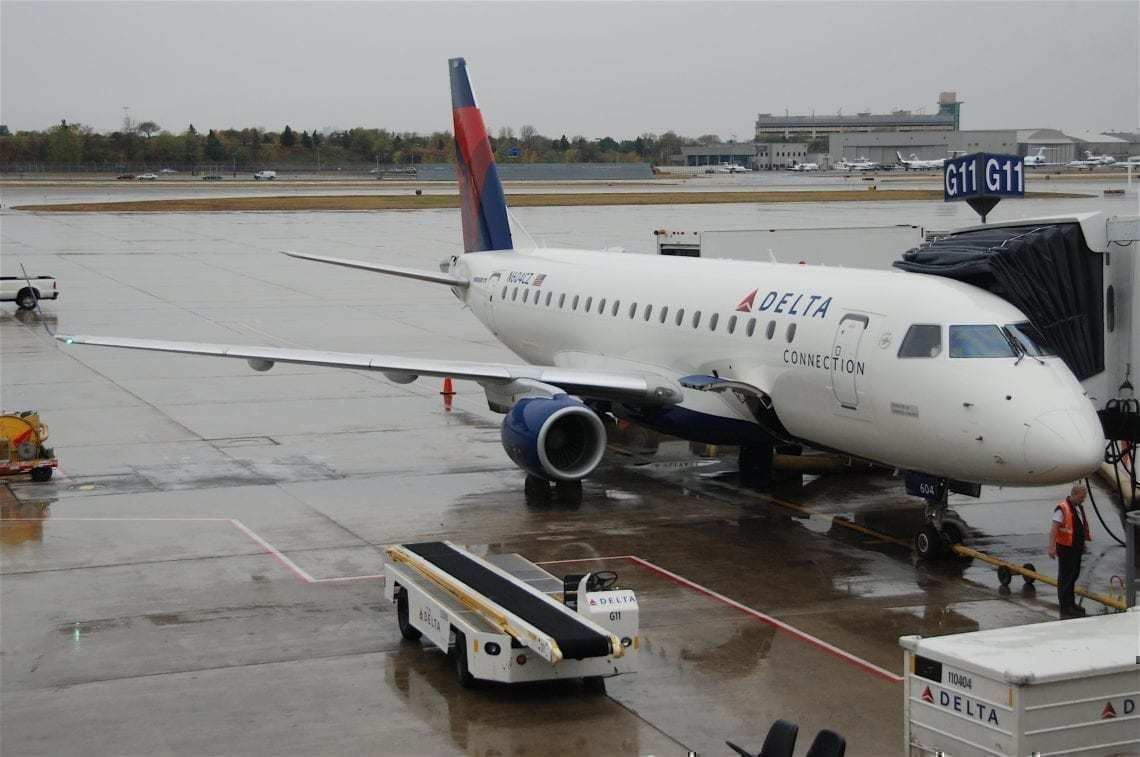Following the story of turbulence yesterday in Europe, a Delta flight in Nevada has hit severe turbulence and had four people sent to the hospital.This story has some pretty interesting if horrifying, details. Readers who are about to fly or might get nervous, we suggest you read this story instead.
What are the details?
Delta Flight 5763 was flying a normally scheduled service from Santa Ana to Seattle when it encountered unexpected turbulence. The Embraer ERJ-175 was flying over the first mountain range of the Serria Nevada outside of Reno when it suddenly took a nose dive of 200 feet.
This caused the flight attendant and drinks trolly (that was currently being served to customers) to fly up into the ceiling of the cabin and slam back down. Additional free items around the cabin were thrown about, such as liquids, cups, laptops and more.
We just saw the drink cart go up in the air. The flight attendant was tossed around like a rag doll. It was wild. -Â Dave Macias
One passenger was in the bathroom at the time and suffered a mild concussion as their head hit the ceiling.
The plane proceeded to perform the same dive again moments later, as it navigated the rolls of turbulence.
Upon gaining control of the aircraft, the pilots landed the plane immediately at Reno airport. Medical staff met the plane to take three passengers and one flight attendant to the hospital.
The remaining passengers were fed and given beverages at Reno, as a replacement plane was flown out. Whether or not all of the passengers took off again is unknown, but who could blame them if they found alternative transport.
Delta released a statement apologizing for the event and promising to get the passengers safely to their destination
What makes this story interesting is Delta really does spruke (claim) that their aircraft don't suffer turbulence thanks to their weather monitoring and millions spent in turbulence prediction. At their command center, they use a team of over 20 meteorologists to study the air along their routes in great detail. This information is then processed in vast supercomputers that are able to create a map or cross-section of the sky.
This information is then sent out to special iPads on board of 80% of the Delta fleet. This app translates all the weather data into a simple, easy to use information that pilots can quickly glance at to better calculate their route. It essentially gives a roadmap of all the hazards and how specific they are. A large storm might only have a small slice of turbulence that the pilot can easily avoid without much course correction nor fuel burning.
But an excuse could be made that this was not technically a Delta flight, but rather a smaller company that provides feeder route services for the airline. They may have not had access to the information.
Again, as we write at the end of all these stories, these events are super rare and you will most likely never hear about them again. Don't fear if you are flying, and remember, a plane might fall 300 feet but there are miles of air beneath it to glide safely and softly down.
What do you think? Let us know in the comments.

